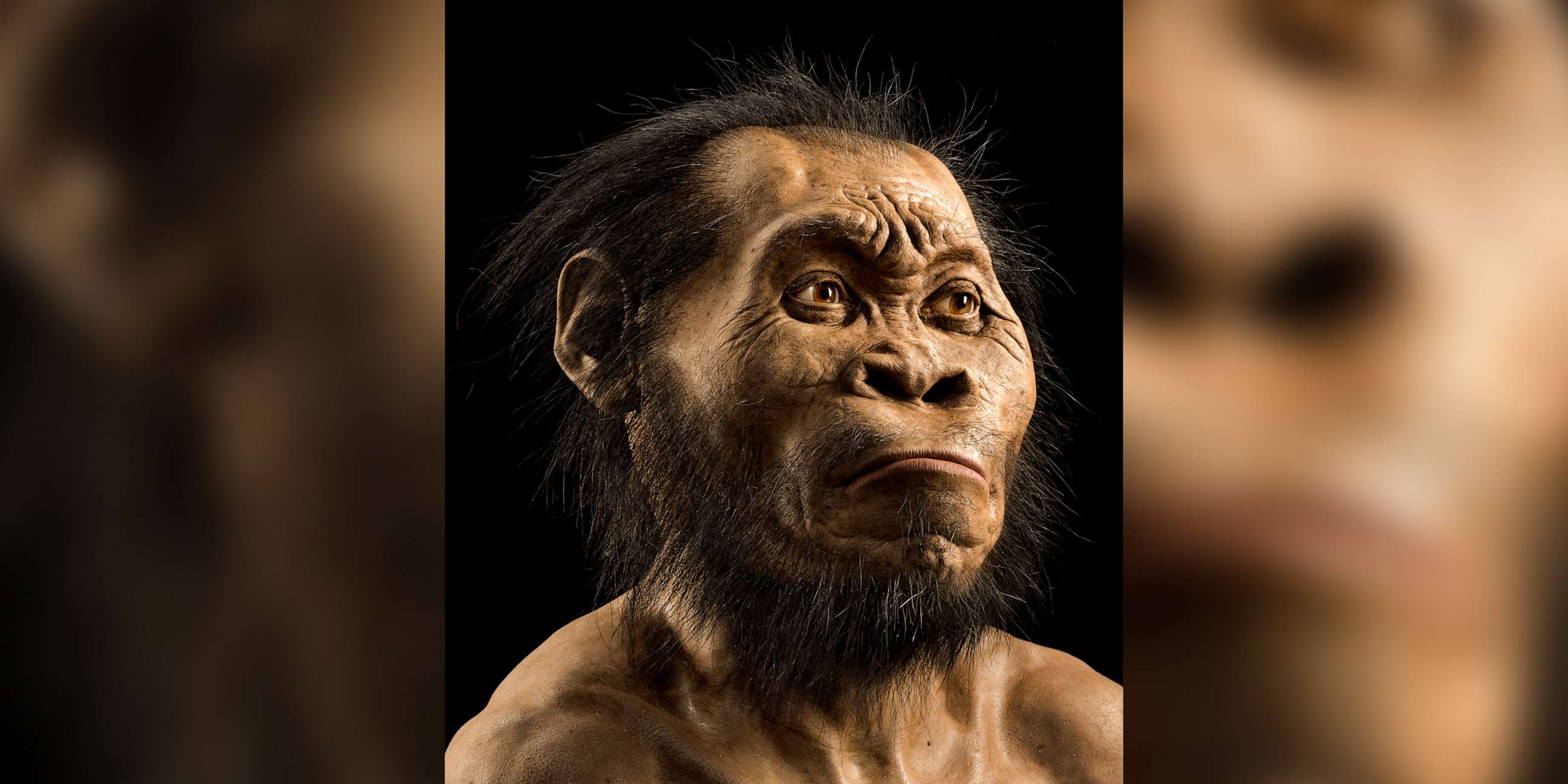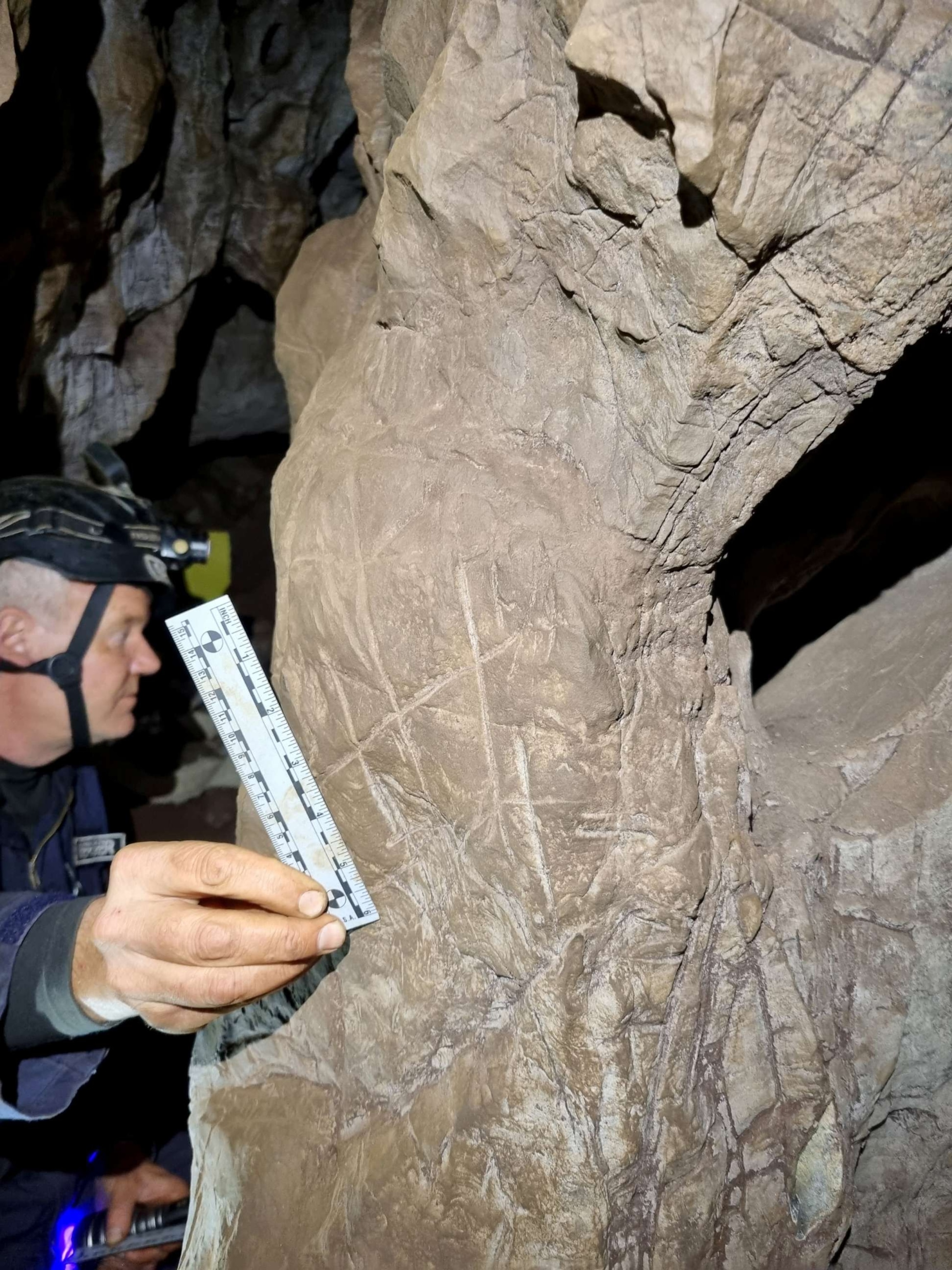Homo naledi had a brain one-third the size of humans but displayed intelligence far beyond, according to new discovery
Bigger brains may not equate to higher intelligence after all.
Bigger brains may not equate to higher intelligence after all, according to a remarkable discovery about an early hominin.
Homo naledi, a hominin discovered in the Rising Star cave system in Africa's Cradle of Humankind in 2013, had human-like hands and feet but a brain a third of the size of humans -- a characteristic researchers previously attributed to a marker of far less intelligence than its Homo sapien relatives.
But the assertion that bigger brains make for a smarter species may have been disestablished now that scientists have made a harrowing journey into the Rising Star cave and discovered that the species -- which lived about 335,000 to 236,000 years ago -- buried its dead and marked the graves. It is the first non-human species in history known to do so, paleoanthropologist and National Geographic Explorer in Residence Lee Berger told ABC News.

The researchers began to hypothesize that Homo naledi buried its dead during continued excavations in 2018 and in July 2022, those hunches were not only proven but amplified once Berger and his team found skeletal remains of Homo naledi and then carvings on the wall above them to mark those laid to rest there.
The symbols included triangles, squares and a sort-of "hashtag" sign, as in two cross-hatching equal signs, Berger said. However, it is unclear what these carvings meant, and researchers will be delving into whether there is a "random chance" that Homo naledi used the same symbols as humans or if they were obtained from some sort of shared ancestry.

It is unclear whether there was any interaction between Homo naledi and Homo sapiens, which would have existed at the same time about 250,000 year ago. Researchers are continuing to work on the molecular biology of the remains to determine whether there are similarities to humans.
The finding was "striking" and "shocking" and erases the idea of human exceptionalism -- that humans are different than animals and special due to their big brains. Homo naledi had brains about the size of a chimpanzee, and yet practiced ritual burials, a behavior previously assumed was only done by humans, Berger said.
Scientists also learned that Homo naledi had fire as well the kinds of animals they ate based on the location of bones found in the cave and the chambers adjacent to them, Berger said, adding that researchers knew nothing about the behavior of the species before the discovery. They may have even been placing artifacts in graves with the bodies.
"Suddenly we went from having just these wonderful anatomy lesson of a species to an entire culture," Berger said.

The species is characterized by their pin-headed and tall, skinny bodies that appear to not match the time period in which they lived.
"They looked like they should have lived millions of years ago, but they were actually existing 250,000 to 350,000 years ago, the same time modern humans are evolving," Berger said.
It is also unclear when Homo naledi went extinct -- one of the many reasons why Homo naledi is still what Berger describes as a "wonderfully enigmatic" species.
"It was an extraordinary scientific moment, and one that's going to lead to science and exploration and more discoveries over the next decades," Berger said.

While Rising Star is one of the most well-known caves in the Cradle of Humankind, declared a UNESCO World Heritage site in 1999, it has only been explored by dozens of people. But those amateur cavers -- and some professionals -- never discovered the true wonders of what the cave contained.
After creating a map of the cave in 2008, Berger discovered a "narrow, shoot-like labyrinth" that led to the chamber where the bones were found.
Berger had to lose 55 pounds to fit into the cave, which measured at just 7.5 inches wide in the slot he had to slide into to access the cave and 11 to 12 inches at the widest points. The cave cannot be widened because it could jeopardize the integrity of the structure and do damage to any artifacts and remains below.
The 40-foot journey down the pitch black shoot was "torture," requiring difficult maneuvering of the body -- so much so that Berger dislocated his shoulder and tore his rotator cuff at one point when he got stuck. It took him about 15 minutes to get down and over an hour to get back out, he said. There was no way to use equipment to aid in the passage.

Berger was not able to make it into the chamber with the carvings, a task left to his colleagues with smaller builds. He is still getting physical training and can't lift his right arm up all the way.
"But it was worth every moment of it," he said.
Berger was also involved in the findings that led to the discovery of Australopithecus sediba in 2008 at the Malapa site, also in the cradle of Africa. Australopithecus sediba lived between 1.977 and 1.98 million years ago.
Read more about the discovery at NatGeo.com.
National Geographic and ABC News share the same parent company, The Walt Disney Company.





